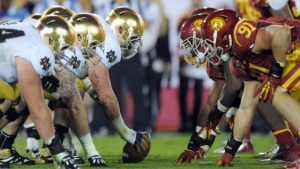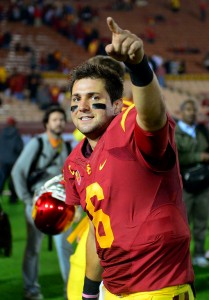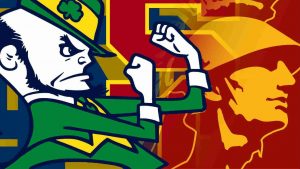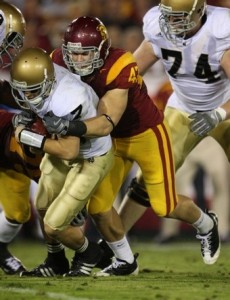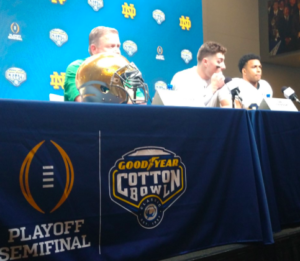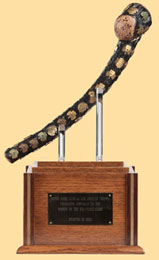In the USC Trojans vs the Notre Dame Fighting Irish, you have a rivalry that doesn’t have the element of close proximity, and that makes it unlike any other in the world. Duke and North Carolina are separated by just ten miles on Tobacco Road.
Liverpool FC and Everton are separated by Stanley Park, which is just over a mile long. USC vs. Notre Dame isn’t an in-state rivalry like Michigan State-Michigan, or even a border war like Michigan-Ohio State.
And this concept is more relevant than ever, given the death of the concept of “conferences.” We already covered that idea a couple of months ago, as a conference, by definition, is a partnership of teams that are geographically closer to you than all the other teams out there.
That is, or at least was the point of “leagues” or “conferences,” but that is now dead, and USC is as much a classic example of this phenomena as anyone.
Get ready for those Big Ten conference games against Penn State and Rutgers!
“They’re not up the street. They’re across the country,” Brian Kelly said of USC at his weekly news conference; ahead of the 91st edition of this series, which took place in 2019.
“Great players have played in it. Great coaches that have coached in it…it’s one of those rivalries that hasn’t gone away. It’s part of college football.”
It’s often called the greatest intersectional rivalry in all of college football has each school has won 11 national championships and eight Heisman Trophies.
The game even makes a cameo in the legendary 1988 action-thriller “Die Hard.”
The Jeweled Shillelagh rivalry, which began in 1926, is an annual save the date affair.
This game is customarily played on the Saturday following Thanksgiving Day when it is staged in Los Angeles or on the third Saturday of October when it’s in South Bend.
The 2012 game, in which the Irish were attempting to finish the regular season perfect drew higher ratings than the previous year’s Rose Bowl and Fiesta Bowl.
Brian Kelly spoke of his first memories of the USC vs. Notre Dame rivalry while growing up in an Irish Catholic household in Massachusetts.
“John Robinson on the sidelines, and Ara Parseghian, and it would be from my perspective, just the pageantry of the game on tv, and growing up in Massachusetts, it was one of those games you wanted to watch on tv because it was played up.”
“Those two iconic figures and then Sam Bam Cunningham, and from a Notre Dame stand point- there are so many great players that played in the game that I could probably give you 20 of them.”
Paul M. Banks is the owner/manager of The Sports Bank. He’s also the author of “Transatlantic Passage: How the English Premier League Redefined Soccer in America,” and “No, I Can’t Get You Free Tickets: Lessons Learned From a Life in the Sports Media Industry.”
He’s written for numerous publications, including the New York Daily News, Sports Illustrated and the Chicago Tribune. He regularly appears on NTD News and WGN News Now. Follow the website on Twitter and Instagram.
